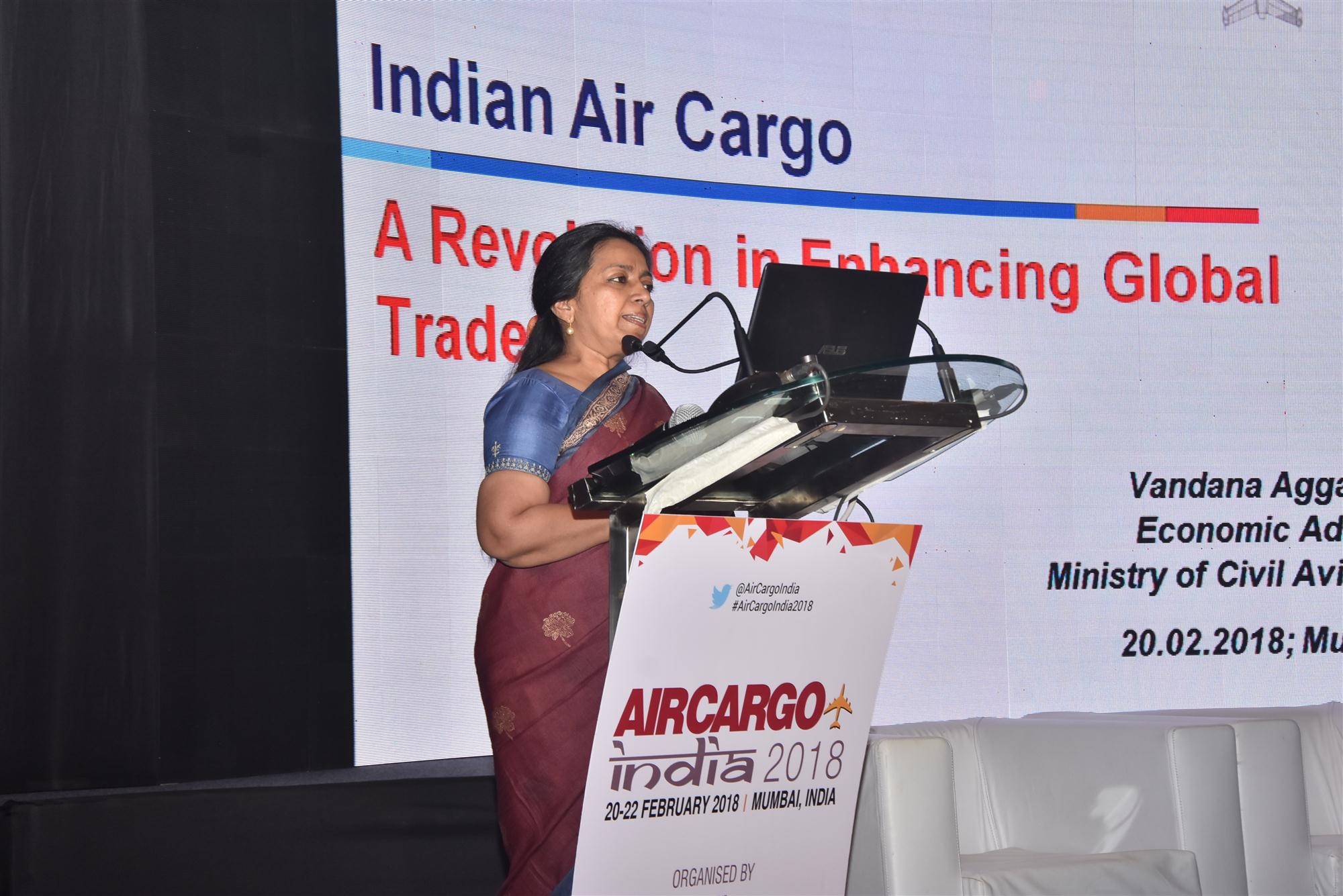
India’s government is eager to push forward with the development of the country’s air cargo sector.
According to Vandana Aggarwal, economic advisor to the Indian Ministry of Civil Aviation, one of the first things that should be addressed is India’s global air connectivity.
“A 1% increase in air connectivity generates a 6.3% enhancement in the value of trade,” she said, giving the keynote address at the biennial Air Cargo India conference and exhibition in Mumbai. “How can India improve this connectivity, which to me is totally inadequate?”
Aggarwal said that, apart from the geographical patchiness of India’s international air links, most of the logistics chains that she had looked at in the country were enterprise-centric. In other words, they were focusing on how enterprise resource planning could be done rather than seamlessly developing a full logistics value chain from the consignor to the consignee.
To that end, the Indian government has identified seven main actionable points, most of them centred on the creation of an electronic national air cargo community system which would promote frictionless data interchange.
One of these is Fly from India, a drive to encourage cargo to be moved via India and to create transhipment hubs in the country.
“I’m very happy to say that the government, instead of defining policy in a top-down manner, is looking to develop proofs of concept,” said Aggarwal. “We have been working with Delhi International Airport Limited and Mumbai International Airport Limited to try and see how we can run some programmes so that the two main regulators, which are the customs and security agencies, can ease or regulate the transhipment that needs to be done in a manner which is efficient and forward-looking.”
Another initiative is the modular development of a totally digital e-cargo platform, similar to the national Goods and Services Tax payment platform.
“There are payment gateways which are pan-India, but today if we look at India’s cargo community, each airport has its own payment mechanisms,” Aggarwal said. “Each airline has its own payment gateways, rather than accessing them on a uniform, pan-India basis. The most important point is that it’s a contracting and booking platform.”

Just as passengers can book their tickets on websites, online contracting and booking should be possible for shippers, forwarders, customs agents and transporters.
“I think this would have great value for express deliveries too, where customization of the needs or demands is a vital component,” said Aggarwal. “We think that’s an important way of bringing in competition and transparency in the booking process.”
Other actionable points include improving regional connectivity, e-transportation, e-compliance, and the setting up of a grievances body.
The principal aim of these initiatives is to reduce the cost of logistics from 13-14% of the national GDP to roughly 9% by 2022, which will help to boost India’s current 35th ranking in the World Bank’s Logistics Performance Index.
“Well, we are a bit more ambitious,” said Aggarwal. “We want to go to the 15th position by 2020.”
A similar logistics performance index is being developed for the individual states within the country too, in order to generate some domestic competition among them.
“Work on this has begun in earnest,” Aggarwal said. “We hope to get it in place by the end of 2018.”
It is hoped that the initiatives will also result in the creation of a paperless regulatory environment, a reduction in cargo release time, an improvement to the modal mix which is currently heavily weighted in favour of road and rail to the detriment of air, and the declaration of logistics as an industry or infrastructure sector.
“You could tell us that we are dreaming, but the message that I have been getting from all the cargo fraternity is invariably ‘we are working with you’ because they see a gain in these initiatives for everybody,” said Aggarwal. “These are not targeted at any one segment of the entire logistics chain.”
She added that the government has attempted to address as much of the feedback and criticism that it has been receiving as possible.
“You tell us where the pain point is, and we will do our best endeavour to remove it at the earliest possible,” Aggarwal said. “The government is partnering with you as the silent backbone in the entire chain. That is something that I can assure you is a reality and not empty words.”
One example of that government partnership is a dedicated air freight corridor that has been set up with Afghanistan, with one branch for Delhi and another for Mumbai. Aggarwal said that both Mumbai and Delhi have been clearing the cargo in roughly two hours.
She also noted that air cargo in India grew 10% overall in 2017, and has grown by 15% in the first two months of 2018.
“That’s what India can do when it sets its mind to do it,” said Aggarwal. “And we have 1.3 billion minds here, so let’s pool them together and make it happen.”
By Jeffrey Lee
Asia Cargo News | Mumbai



